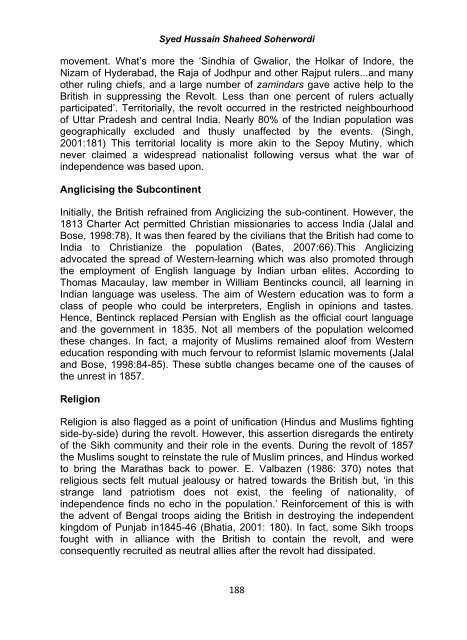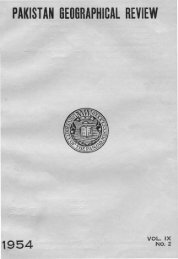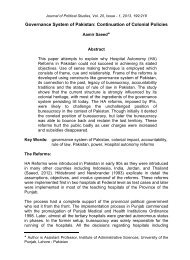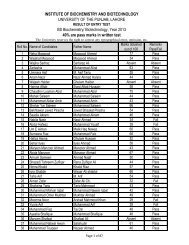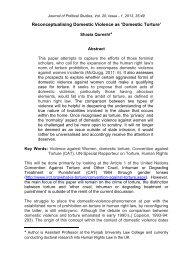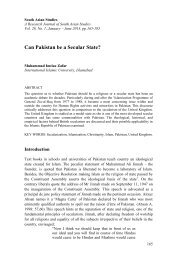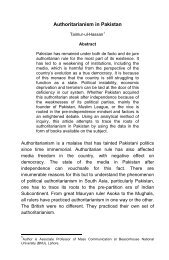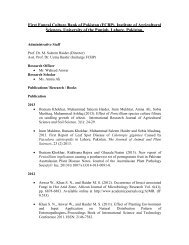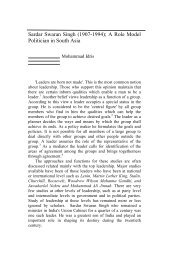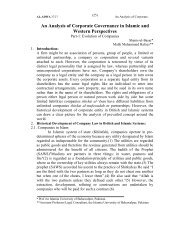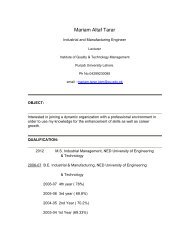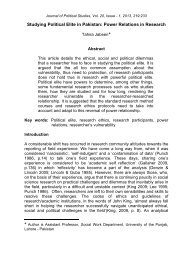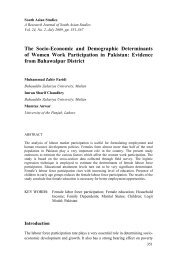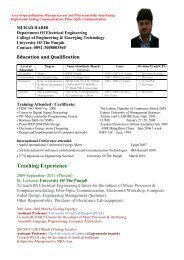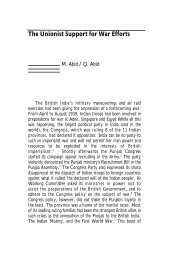The Significance of the Different Names Applied by Historians to the ...
The Significance of the Different Names Applied by Historians to the ...
The Significance of the Different Names Applied by Historians to the ...
You also want an ePaper? Increase the reach of your titles
YUMPU automatically turns print PDFs into web optimized ePapers that Google loves.
Syed Hussain Shaheed Soherwordi<br />
movement. What’s more <strong>the</strong> ‘Sindhia <strong>of</strong> Gwalior, <strong>the</strong> Holkar <strong>of</strong> Indore, <strong>the</strong><br />
Nizam <strong>of</strong> Hyderabad, <strong>the</strong> Raja <strong>of</strong> Jodhpur and o<strong>the</strong>r Rajput rulers...and many<br />
o<strong>the</strong>r ruling chiefs, and a large number <strong>of</strong> zamindars gave active help <strong>to</strong> <strong>the</strong><br />
British in suppressing <strong>the</strong> Revolt. Less than one percent <strong>of</strong> rulers actually<br />
participated’. Terri<strong>to</strong>rially, <strong>the</strong> revolt occurred in <strong>the</strong> restricted neighbourhood<br />
<strong>of</strong> Uttar Pradesh and central India. Nearly 80% <strong>of</strong> <strong>the</strong> Indian population was<br />
geographically excluded and thusly unaffected <strong>by</strong> <strong>the</strong> events. (Singh,<br />
2001:181) This terri<strong>to</strong>rial locality is more akin <strong>to</strong> <strong>the</strong> Sepoy Mutiny, which<br />
never claimed a widespread nationalist following versus what <strong>the</strong> war <strong>of</strong><br />
independence was based upon.<br />
Anglicising <strong>the</strong> Subcontinent<br />
Initially, <strong>the</strong> British refrained from Anglicizing <strong>the</strong> sub-continent. However, <strong>the</strong><br />
1813 Charter Act permitted Christian missionaries <strong>to</strong> access India (Jalal and<br />
Bose, 1998:78). It was <strong>the</strong>n feared <strong>by</strong> <strong>the</strong> civilians that <strong>the</strong> British had come <strong>to</strong><br />
India <strong>to</strong> Christianize <strong>the</strong> population (Bates, 2007:66).This Anglicizing<br />
advocated <strong>the</strong> spread <strong>of</strong> Western-learning which was also promoted through<br />
<strong>the</strong> employment <strong>of</strong> English language <strong>by</strong> Indian urban elites. According <strong>to</strong><br />
Thomas Macaulay, law member in William Bentincks council, all learning in<br />
Indian language was useless. <strong>The</strong> aim <strong>of</strong> Western education was <strong>to</strong> form a<br />
class <strong>of</strong> people who could be interpreters, English in opinions and tastes.<br />
Hence, Bentinck replaced Persian with English as <strong>the</strong> <strong>of</strong>ficial court language<br />
and <strong>the</strong> government in 1835. Not all members <strong>of</strong> <strong>the</strong> population welcomed<br />
<strong>the</strong>se changes. In fact, a majority <strong>of</strong> Muslims remained alo<strong>of</strong> from Western<br />
education responding with much fervour <strong>to</strong> reformist Islamic movements (Jalal<br />
and Bose, 1998:84-85). <strong>The</strong>se subtle changes became one <strong>of</strong> <strong>the</strong> causes <strong>of</strong><br />
<strong>the</strong> unrest in 1857.<br />
Religion<br />
Religion is also flagged as a point <strong>of</strong> unification (Hindus and Muslims fighting<br />
side-<strong>by</strong>-side) during <strong>the</strong> revolt. However, this assertion disregards <strong>the</strong> entirety<br />
<strong>of</strong> <strong>the</strong> Sikh community and <strong>the</strong>ir role in <strong>the</strong> events. During <strong>the</strong> revolt <strong>of</strong> 1857<br />
<strong>the</strong> Muslims sought <strong>to</strong> reinstate <strong>the</strong> rule <strong>of</strong> Muslim princes, and Hindus worked<br />
<strong>to</strong> bring <strong>the</strong> Marathas back <strong>to</strong> power. E. Valbazen (1986: 370) notes that<br />
religious sects felt mutual jealousy or hatred <strong>to</strong>wards <strong>the</strong> British but, ‘in this<br />
strange land patriotism does not exist, <strong>the</strong> feeling <strong>of</strong> nationality, <strong>of</strong><br />
independence finds no echo in <strong>the</strong> population.’ Reinforcement <strong>of</strong> this is with<br />
<strong>the</strong> advent <strong>of</strong> Bengal troops aiding <strong>the</strong> British in destroying <strong>the</strong> independent<br />
kingdom <strong>of</strong> Punjab in1845-46 (Bhatia, 2001: 180). In fact, some Sikh troops<br />
fought with in alliance with <strong>the</strong> British <strong>to</strong> contain <strong>the</strong> revolt, and were<br />
consequently recruited as neutral allies after <strong>the</strong> revolt had dissipated.<br />
188


